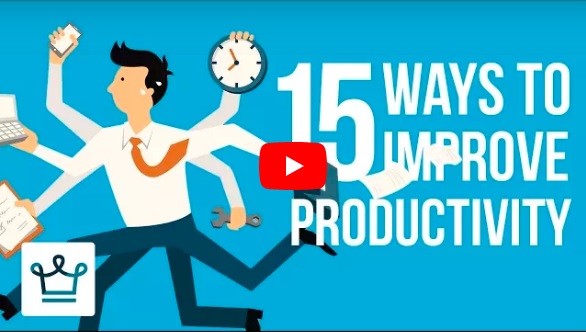Personal Productivity Part 1: Be Mindful and Don’t Hurry

Productivity: How You and Your People Can Be More Productive
Productivity. We all want it. Some seem to have it. You may have tried one of the dozens of productivity systems that have been available for decades. I have tried 5 or 6 different systems through the years and have blended several of their tenants that seem to work well for me. I have also studied productivity as it relates to leadership and project management. I will share what I know to be true and my opinions on productivity in these 3 posts.
One certainty is that there is no universal magic system that will make anyone who uses it super productive. Some thrive on paper organizers. Some like notebooks that they fill every other week or so. Some like, myself, want everything online. Others use a blend and some really do not have a system at all. Those are the people whom I worry about.
This post (Part 1 of 3) discusses the Productivity topics of Be Mindful and Don’t Hurry and What We Do and Should Do. It is all our responsibilities to work on our Productivity and effectiveness. If you want to define and improve your leadership skills, read on!
Our courses cover these and many more topics in an experiential way, here is one: www.dataanalysis.com/training/courses/impactful-leadership-and-management-best-practices-for-supervisors-to-cxos Contact us to craft a productivity course based on your tools and what you want to accomplish.
Be Mindful
There are 3 main tenants to go over on “Be Mindful” as it relates to Productivity.
- Prioritize – Step back to make sure you work only on your top goal.
There are so many things that can intrude on our consciousness. Make sure you have only that which you need to work on your goal in front of you. Close or suspend any other documents, programs, browser tabs, and anything else you do not need. For example, I needed a Google tab open to research for this post, but I did not need my email open so I suspended it prior to reviewing my draft. I blocked out time to do this post and stuck to it through interruptions until it was done.
- Plan – Step back to assess how to move your top goal forward.
There are usually many paths toward a goal. Jumping to action without planning is more prevalent than I ever imagined. Almost every time I ask someone why they are doing that particular task to get to their goal they usually say something like, “Well, I knew I had to move quick and it was the first thing I thought of.” To be most productive, you must plan the best path forward, not just grab any handy task that might help. Only when you have carefully thought out alternatives to each step will you be able to make an educated guess at which task will take less time, provide better results, improve relationships, or any other facet of your particular goal.
- Ask – What is the most effective use of my time right now on this goal?
There are a couple of considerations that you may find useful in deciding what to do next.
One is do you have what you need to complete or at least meaningfully start your task? If not, you have discovered a subtask of getting what you need to finish your task. Knowing this, should you do this subtask now or would it be better to move on to something else related to your goal and tackle that another time? An example is you need a quick answer from a coworker and they are not on your chat/IM app right now. You may choose to message them in an appropriate way and go on to your next task for the same important goal.
Now, Two is do you have time to dig into this task? An example is you have finished three tasks toward your goal in the last 45 minutes and the next task will take half an hour at least, and you have ten minutes before your next meeting. You may choose to start your next task and tie it up at a reasonable point in ten minutes or to do a task that you can completely finish in ten minutes. The danger here is that you will not take the time to break the big tasks down into next actions and end up procrastinating on them unnecessarily.
Don’t Hurry
In business, at home, in professional associations, I have seen people “Hurrying” to get things done. This is not good and only very rarely have I seen it drive best results. Now let’s set some terms.
Hurrying – Doing things much more quickly than normal.
Procrastinating – Putting off things you think you should do now or soon until later.
Good Stress – Appropriate level of urgency. (Guess what Bad Stress is?)
So, in my experience, Procrastinating past the time where you could normally get something done leads to Hurrying which generates Bad Stress all which lead to underwhelming results and increasing overall stress throughout the process. Without meaning to, this process can lead to a vicious cycle.
Don’t get me wrong, I and most managers really believe a reasonable amount of Good Stress can lead to Planning, Prioritizing, and Asking yourself what you should do next. Then doing it sooner rather than later which much more often leads to good results and reducing overall stress. When recognized and emulated, this process can build the habit of a virtuous cycle.
What Should Leaders Do to Increase You and Your People’s Productivity? Your Thoughts?
Thoughts on how you can best improve relationships, techniques, and tools to increase productivity that we did not touch on? Good luck and keep your eye out for ways to improve your productivity!
Your path to business success.

